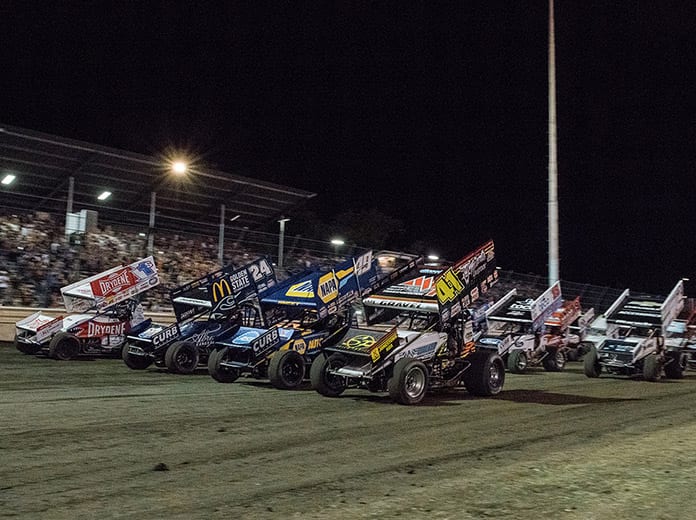Most things in California’s Napa Valley only get better with age. The valley produces some of the world’s best wines from vineyards that, in some cases, are a century old and passed on through three or four generations.
Set among some of the world’s most prized Cabernet grapes is a race track, Calistoga Speedway, that is older than many of the vineyards surrounding it. The 85-year-old half-mile oval, which is located on the Napa County Fairgrounds, is as rare and prized by beer-drinking fans as any well-aged pinot noir would be cherished by a sommelier in a Michelin star restaurant.
Originally built as a horse racing track in 1937, Calistoga Speedway is one of the few remaining true half-mile ovals in the western United States.
“All of the old fairgrounds tracks had to be true half miles because they were built for horse racing,” noted Tommy Hunt, Calistoga’s promoter, referring to the need for standard-sized tracks for record-keeping purposes. “A lot of tracks measure a half mile somewhere on the track, but Calistoga measures a half mile eight feet from the pole all the way around.”
Located at the northern end of the Napa Valley in the town of Calistoga, the track sits at the base of the Mayacamas Mountains, a small coastal range that creates a majestic and scenic backdrop for fans.
Wine experts rate Cabernet up to 100 points on the Parker scale, with scores above 95 commanding nosebleed prices per bottle.
If there was a Parker scale for race tracks, most fans in California would rate Calistoga at 110 for its combination of high-speed racing and gorgeous surroundings.
But despite nearly 85 years of racing history that spans everything from wire wheels to winged 410 sprint cars, the iconic track is facing an uncertain future, caught between a small town attempting to retain a way of life that feels like a Norman Rockwell painting and the modern fiscal problems of a region hard hit by a series of setbacks ranging from COVID-19 to wildfires.
Created in 1937, the Napa County Fairgrounds was constructed in the middle of Calistoga at a time when every county in California was encouraged to build a facility where people could celebrate their agricultural roots and that could become a central place for community events.
Horse tracks were often included in an effort to generate revenue from pari-mutuel betting, which was popular in that era. But there is little evidence there was much horse racing at Calistoga.

Within a year, a former motorcycle racer turned promoter, Charlie Curryer, brought sprint cars to the half-mile oval and the track has been exclusively a home for open-wheel racing ever since.
“At first, there were only about a half dozen cars, but they were all sprint cars,” recalled Super Bowl-winning football coach Dick Vermeil, who grew up in the town and whose family played a critical role in the speedway’s history. “There were a lot of different engines, like a Jaguar, four-port Rileys, flatheads, HAL and a V-8 Studebaker, which won the first race.”
When racing resumed following World War II, the car count mushroomed under the sanction of the American Racing Ass’n, which evolved into the Northern Auto Racing Club, the forerunner of what is known today as the King of the West series.
During the early post-war years, racing at Calistoga Speedway was more like a rum-runner’s dash down country back roads than driving on what is now a modern, well-lit and much safer track. All of the races were day shows until lights were added around 1950, so the local high school could play football in the infield.
Typical of many tracks of the day, “It was rough and dirty and, if you went through the walls, boards would fly and you would end up in the trees,” Vermeil said.
Even so, Calistoga attracted more than local drivers, many of whom became better known for their success in the Indianapolis 500, including Bob Veith, Johnny Parsons, Fred Agabashian and Jim Hurtubise, who was so broke when he arrived in Calistoga that he needed a loan from Vermeil’s father, Louie Vermeil.
Click below to keep reading.
